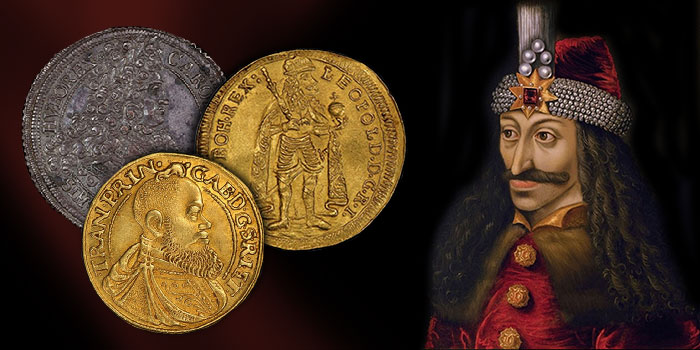
By Dylan Dominguez for PCGS ……
Transylvania, as stated in Bram Stoker’s novel Dracula (1897), was “one of the wildest and least-known portions of Europe”. It is also known in Bram Stoker’s novel as the home of where the fictional character was created, based on the Romanian ruler, Vlad III Dracula. Although Vlad III Dracula was labeled as a vampire, he was far from what was described in the novel. The novel described a bloodthirsty vampire from Transylvania who wanted to suck the blood of humans – and that’s not too far off. But Vlad, was the ruler of Wallachia (south of Transylvania) in the latter half of the 15th century and was known for impaling his enemies on large wooden stakes, which proved to be a great scare tactic. This earned him the infamous nickname “Vlad the Impaler”.
Dracula was raised in a family that was part of the Dragon Order; this meant that Dracula’s father swore his life to defend the cross and Christianity against all rivals. Over his reign it is speculated that he impaled and killed up to 80,000 invaders from the Ottoman Empire. He was bred to fight for his father and the Hungarian king, nothing would stop him from fighting for his empire. After Vlad’s father and oldest brother were murdered, he lived to get vengeance for what happened to them.
Although no coinage was made during Vlad’s reign, here are some examples of the coinage made in Transylvania and Wallachia during Dracula’s time and other examples produced over the years.
Mircea the Elder (1386-94 & 1397-1418)
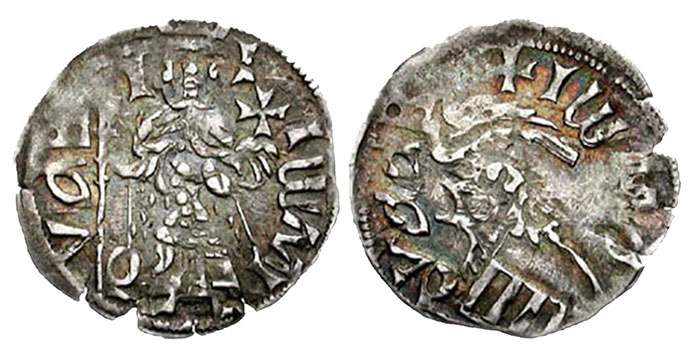
- Obverse: Mircea standing facing forward holding a spear and orb.
- Reverse: The Wallachian crest of an eagle facing left with the head looking right.
Mircea was Vlad II Dracul’s father and Dracula’s grandfather. During his reign, Mircea controlled the largest area in their history. He stabilized the power of Wallachia and continued to grow. With only around a 10,000-man army, he had to develop tactics to fight the Ottomans. He knew if he went head-on there would be no chance that 10,000 men would defeat a 40,000-man army. Eventually, he led his army to victory and near the end of his reign he signed a treaty with the Ottoman Empire.
Auction Records: September 7, 2005, CNG Electronic Auction 122 Lot#122 sold for $197 (USD).
Vlad II Dracul (The Dragon)
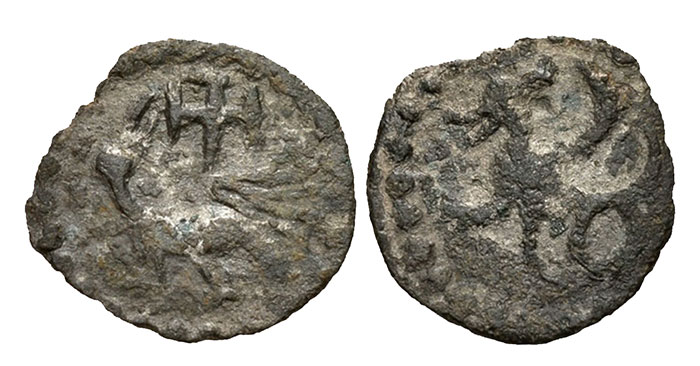
- Obverse: Eagle Facing left with the head looking right and cross above / Beaded Border.
- Reverse: Dragon facing left with wings spread / Beaded Border.
Vlad II Dracul was Vlad the Impaler’s father. Vlad II was a member of the Order of the Dragon instituted by the Holy Roman Empire. Dracul translates today in English as the devil but at the time it meant the dragon. The purpose of the Dragon Order was to defend the cross and Christianity. Due to Wallachia bordering the Ottoman Empire, there was constant battle between Muslims and Christians.
Auction Records: January 8, 2014 CNG Triton XVII Sessions 3 & 4 Lot#1407 Sold for $7,500 (USD).
John II Sigismund (1st reign: 1540-51; 2nd: 1556-70; 3rd: 1570-71)
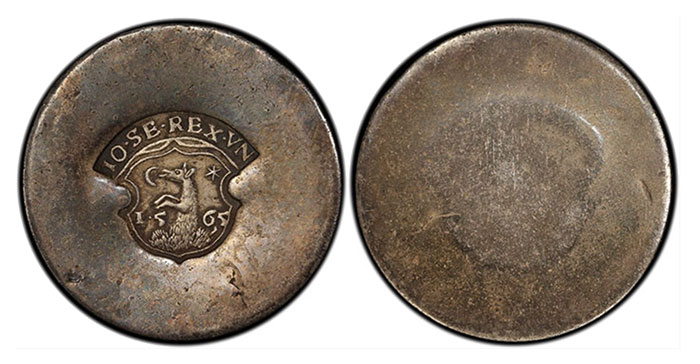
- Obverse: Wolf standing up looking left with a moon and star in the sky; 15 to the left and 65 to the right above inscribed (IO . SE . REX . VN).
- Reverse: Uniface.
John II Sigismund was the king of Hungary from 1540-1551 (1st reign). When John II was born in the first year of his reign, his father passed down the throne to his infant son but John II did not receive the Holy Crown of Hungary. In 1556-1570 (2nd reign), John II and his mother moved back to Transylvania. His mother ruled his kingdom until her death in 1559. He later became the prince of Transylvania from 1570 until his death from an illness in 1571 (3rd reign). John Sigismund’s tomb is in St. Micheals Cathedral in Gyulafehervar, Alba Iulia.
Auction Records: May 29, 2019, Katz Coins Notes & Supplies Europe S.R.O., Auction 22 Lot#1212 sold for $2,173 (USD). September 26, 2016, Spink Auction 16006 Lot# 2598 sold for $753 (USD).
Christopher Báthory (1576-81)

- Obverse: (*MON*TRANSIL*C*B*D*S*) St. Ladislas in a full suit of armor facing forward, Stars on either side
- Reverse: (*Patrona* *unga* 1577) Madonna and Child Reverse
Christopher Báthory was the third son of Stephen Báthory. His father, Stephen, was announced King of Poland in 1575 and adopted the title Prince of Transylvania and made Christopher the Voivode of Transylvania in 1576. Christopher was married to a Polish noblewoman, Catherina Danicska, with whom he had two sons. Both children passed away early; his first son drowned in a river at the age of 22 in 1577, and his second son died most likely because of illness in 1576 at the age of nine. Christopher went on to marry Elisabeth Bocskai and have two more children, Sigismund and Cristina.
Auction Records: April 19, 2016, St. James Auction 36 Lot#673 sold for $3,745 (USD). June 2, 2019, Numismatik Naumann Auction 78 Lot#1022 sold for $4,457 (USD).
Gabriel Báthory (1608-13)
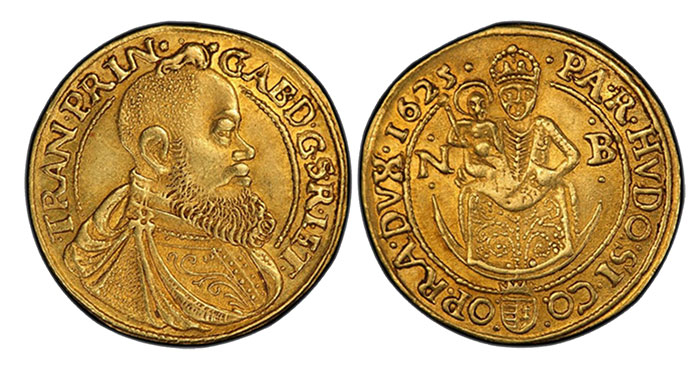
- Obverse: (.GAB.DG.S.R.I.ET.TRAN.PRIN.) Bust facing right
- Reverse: (.PA.R.HV.DO:SI.CO:-:OP.RA.DVX.1625.) Madonna and Child Rev
Gabriel was the son of Stephen Báthory, Stephen was Sigismund Báthory’s cousin. Gabriel was announced Prince of Transylvania in 1608 and only ruled for about five years until his death in 1613. An attempted assassination took place in 1610 by a man that was hired by Istvan Kendi. Istvan fled but his people were captured. After Gabriel was asked to step down, he met with Miklos Abaffy. Miklos had a plan to murder Gabriel. After the meeting, Gabriel took a carriage back to Varad but the carriage was stopped in its tracks and Gabriel was shot and killed.
Auction Records: August 10, 2016, Stacks Bowers August 2016 ANA Auction Lot#21554 sold for $1,900 (USD). June 1, 2019 Nudelman Numismatica Auction 17 Lot#87 Sold for 6,1720 (USD).
Leopold I (1658-1705)
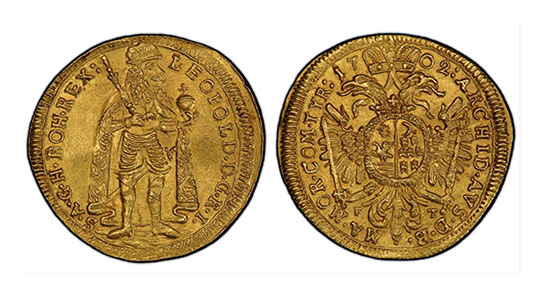
- Obverse: (LEOPOLD.D.G.R.I.-S.A.G.H.BOH.REX) Leopold Standing wearing a cloak facing right holding a scepter and orb
- Reverse: (1702:ARCHID.AVS.D.B.-AM.MOR.COM.TYR:) Imperial eagle, arms on breast
Leopold was Holy Roman Emperor as well as the king of Hungary, Croatia, and Bohemia from 1658 until his death in 1705. Leopold showed a great interest in learning. He went on to become fluent in five different languages including Spanish, French, Italian, Latin, and German. His knowledge led him to a path that would have led to him working for the Church until his brother Ferdinand IV died in 1654. His brother’s death now left him the heir to the throne. After officially being elected in 1658 he went on to rule the Holy Roman Empire. His reign was known for conflicts and war, including battles with the Ottoman Empire.
Auction Records: April 10, 2014, Heritage Auction’s CICF Signature Sale 3032 Lot #26131 sold for 4,500 (USD).
Charles VI (1711-40)
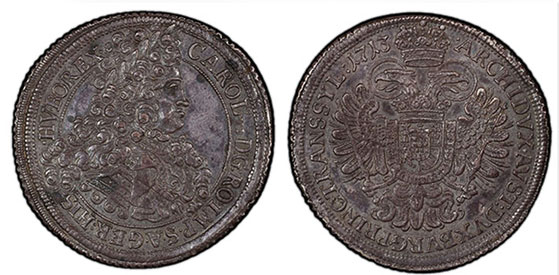
- Obverse: (CAROL^9VI DG: ROIMP.S.A.GER.HIS-.HV.BOREX.) Bust facing right
- Reverse: (ARCHIDVX.AVST:DVX.BVRG.PRINCTRANSSYL:1713) Imperial eagle, Arms on breast
Charles VI was a Holy Roman emperor from 1711-1740, as well as the king of Hungary, Croatia, Serbia, and Archduke of Austria. After the death of Charles II of Spain in 1700, there was no heir to the throne, so Charles declared himself as the king of Spain. Charles fell ill in 1740 during a supposed Hunting trip where it is said he consumed “a meal of death cap mushrooms” and passed away on October 20, 1740. Charles had three daughters but none of his sons had survived. One of his daughters, Maria Theresa, was the only female ruler of the Habsburg. She was a Monarch in 10 different regions including Austria, Hungary, Transylvania, the Austrian Netherlands, and Milan until her death in 1781.
Auction Records: November 27, 2007, Numismatik Auction 19 Lot#760 Sold for $1,263 (USD). June 2, 2012, Pannonia Terra Auction VIII Lot #220 Sold for $2,102 (USD).





